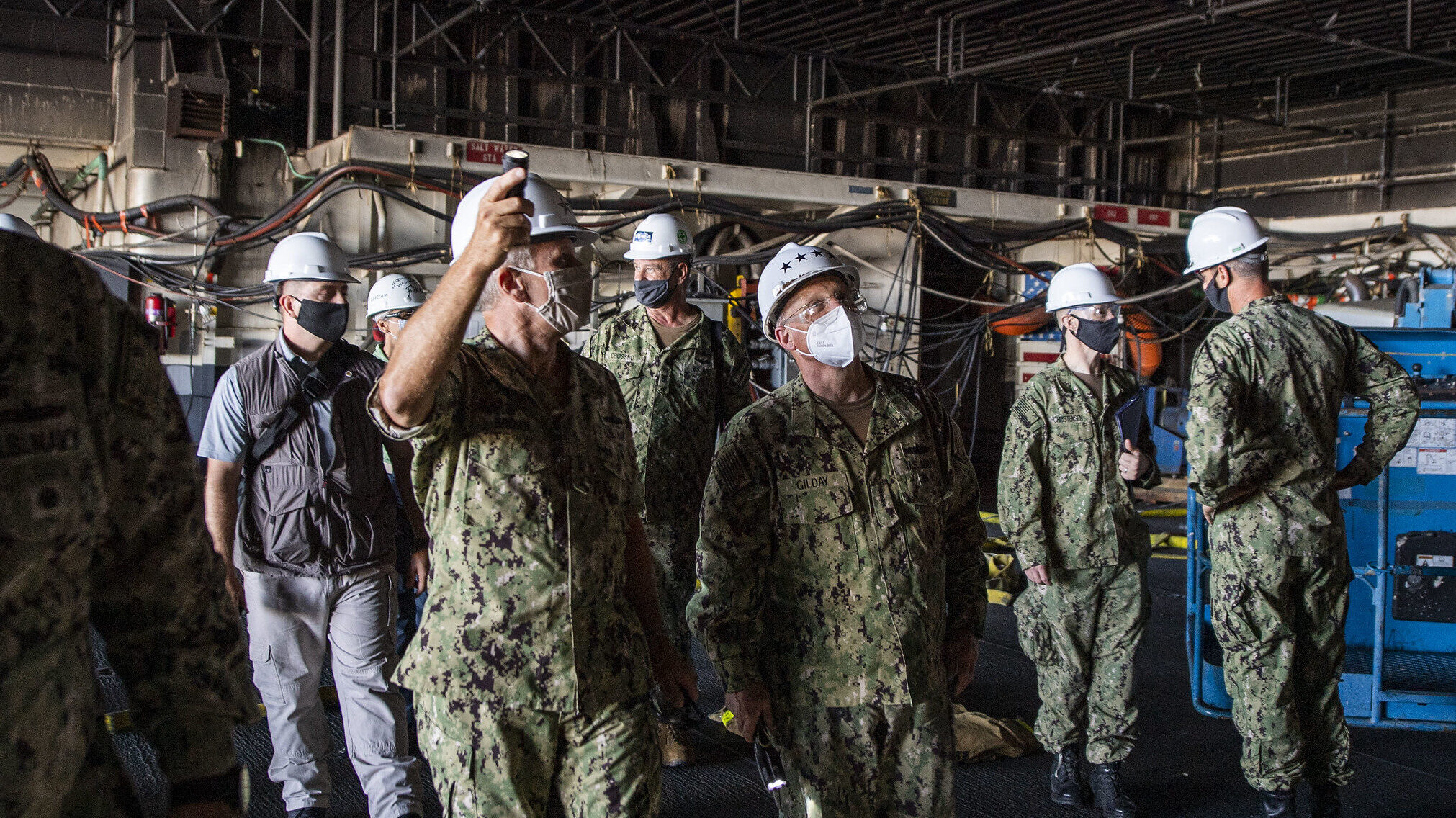
Chief of Naval Operations Adm. Mike Gilday, right, walks through the USS Bonhomme Richard. (Photo courtesy of US Navy.)
WASHINGTON: Decisions on punishments are still to come for the 36 individuals who were at least somewhat responsible for the destruction of the amphibious warship Bonhomme Richard (LHD-6) nearly two years ago.
The final recommendations are currently on Navy Secretary Carlos Del Toro’s desk awaiting approval, Vice Adm. Scott Conn, the service’s top requirements officer, told a House panel today while testifying about the service’s fiscal 2023 budget request.
The remarks came in response to a question from Rep. Elaine Luria, D-Va., who asked how the Navy has held its people — and in particular its flag officers — accountable for the loss of a $3.5 billion capital warship, allegedly set on fire by a disgruntled sailor.
Conn, who served as a key senior officer investigating the incident, explained it was not his role to recommend people who should be punished, but said the Navy has compiled a list of people who “need to go through due course and a formal adjudication process. It was not my job to make any adjudications, decisions at my level.”
The officer responsible for suggesting punishments is the commander of the US Pacific Fleet, Conn added. Luria noted that to date the only disciplinary actions made publicly known about the incident are the ongoing criminal charges against the junior enlisted sailor alleged to have started the fire, Seaman Recruit Ryan Sawyer Mays.
Conn was vague about what has been done so far, saying only that “there are decisions been made, there’s actions been taken and there are other decisions to be made.”
The final punishments, or lack thereof, for the 36 individuals, including five flag officers, named in the Navy’s investigation as being responsible for losing the amphibious warship while it sat in port is sure to be closely scrutinized by lawmakers.
In 2017, following the collisions of two destroyers, the Navy concluded its surface warfare community was under-trained, over-worked and at high risk of the kinds of mistakes that ultimately led to 17 sailors dying at sea in the collisions. Service leadership placed much of the blame on junior officers insisting the ship’s commodore must speak up if their crew aren’t ready for a mission.
That explanation did not go over well with lawmakers who wanted to see admirals and service secretariat step up and own the systemic problems they had allowed to fester, ones that junior officers had no way to control or fix.
Who among the service’s brass is forced to own the problems that led to Bonhomme Richard’s destruction and how severe the penalty is will be a sign of whether the Navy heeded Congress’ warnings. In the meantime, Sawyer, the junior sailor charged with setting the fire that engulfed the warship, is scheduled for a trial this fall, Navy Times reported.
SECNAV floats idea of co-production with foreign shipyards
Del Toro has repeatedly praised shipbuilders in South Korea and Japan for their abilities to keep construction efforts on time.


























